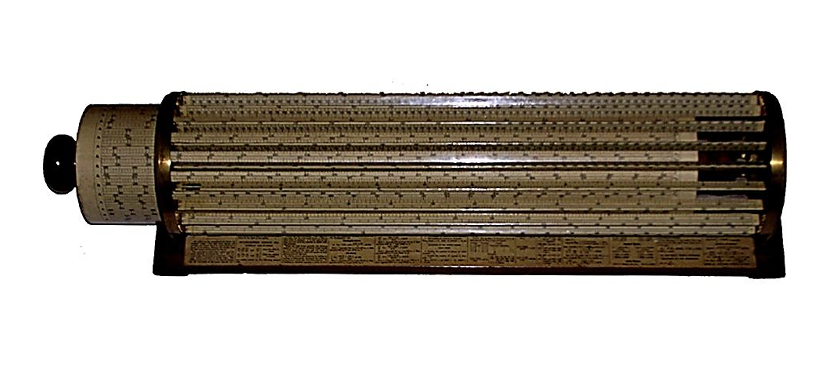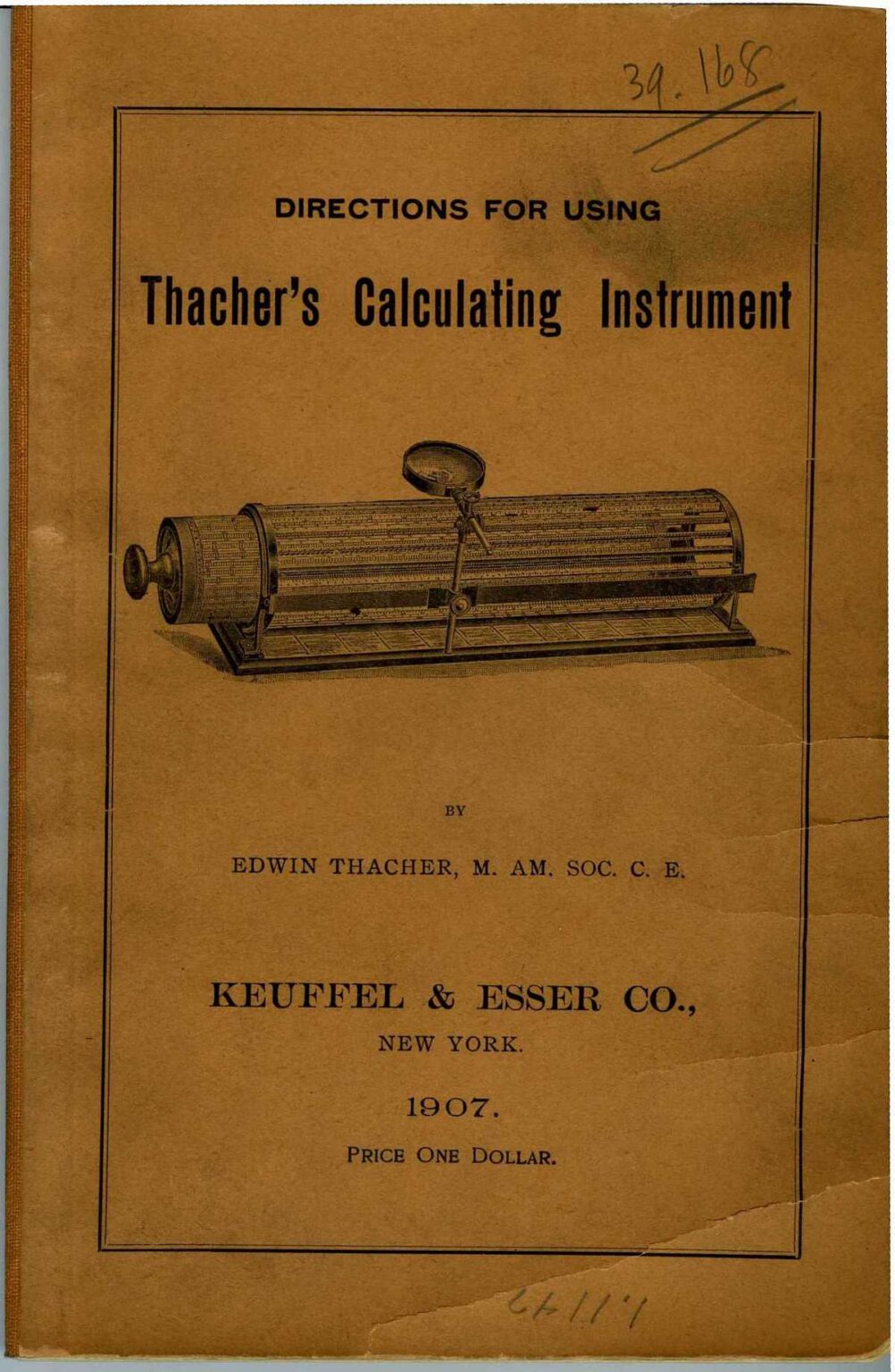THACHER’S CALCULATING INSTRUMENT, 1881
Inventor
Edwin THACHER
Invention date
1881
Manufacturing date:
Unknown. Machine n° 3247
Manufacturing location
USA
Manufacturer
Keuffel & Esser Co.
Dimensions
L 58 H 14 W 14
Reference Number
149

History and Functionality
Edwin THACHER (1839-1920) from Pittsburg, PA (USA) invented a new type of logarithmic instrument. He registered his patent in 1881.
The goal was to have a slide rule for manipulating large numbers (up to 5 digits). To avoid a cumbersome instrument, E. THACHER had the idea of using a cylinder on whose surface sections of a 9 meters long logarithmic scale are placed.
This cylinder can slide and rotate on its axis. The other scale is composed of 20 sections positioned around the cylinder parallel to its generatrices. This scale also can rotate on its axis. The procedure is slightly different from a straight slide rule.
If you want to multiply 225 by 3505: you need to line up 225 on the outer scale with the origin of the moving cylinder and then rotate the entire instrument to find 3505 on the cylinder. The result is on the outer scale.
An identical machine can be seen at the Railway Museum in Sacramento, California. It was used on Western Pacific Railroad c. 1910-1950.
About The Inventor
Edwin Thacher was a notable American civil engineer whose life spanned from 1839 to 1920. Born in De Kalb, St. Lawrence County, New York, Thacher was the youngest of four children in the family of Dr. Seymour and Elizabeth Thacher. His upbringing in Hermon, New York, set the stage for his future contributions to engineering and mathematical instruments. Thacher’s academic journey led him to Rensselaer Polytechnic Institute, where he graduated with high honors in civil engineering in 1863. His career was significantly shaped by his service during the Civil War, where he served as Assistant Engineer to the United States military railroads in Nashville, Tennessee, in 1864.
Following his military service, Thacher embarked on a distinguished career in bridge construction and engineering that spanned nearly five decades.
In 1881, Thacher’s innovative spirit led him to invent and patent the Thacher Cylindrical Slide Rule, a significant advancement in the calculation tools available to engineers and mathematicians of his time. This cylindrical slide rule, known for its precision and ease of use, represented a leap forward in computational tools, allowing for more complex calculations to be performed with greater accuracy. Thacher’s rule was recognized for fitting on a desk but was equivalent to a conventional slide rule over 59 feet long, showcasing his ability to combine practicality with advanced mathematical functionality.
Thacher’s retirement in 1912 marked the end of an illustrious career dedicated to the advancement of civil engineering and the development of tools that would aid future generations of engineers and mathematicians. Edwin Thacher passed away in 1920, leaving behind a legacy of innovation and dedication to the field of engineering

